Why we don’t finish projects
Ever wondered why you don’t finish projects and what you can do about it?
The excitement of squidging yarn in a shop, the whiff of something shiny and new, the latest pattern that ‘has’ to make it to the top of your queue - there are many things that sway us towards new projects.
For some this isn’t a problem because they are monogamous crafters, finishing a project, assessing what they want to make next and only then buying the supplies for the next project/ challenge. But let’s get something clear, this isn’t most people! I know A LOT of crafters and talk to lots of customers online and at shows. The vast majority don’t craft in this platonic way. In fact, I can only think of two people that do this and I’m not one of them.
On the flipside are the crafters that are drawn zombie-like to the next project regardless of how many works in progress they have (WIPs). Again though there is a sliding scale and there are people like myself that get a little twitchy if they have more than five WIPs on the go at any one time and a number of zombie steps later you get to crafters that have 40 or more projects dotted about the various recesses of their home, some receiving love every now and then and others left languishing for years.

Image by Squozen
A 69 year old WIP
Ros is one of the two people I know that do truly monogamous crafting. The first time I went to her house I asked to see her stash (I am a bit of a nosy bugger when it comes to yarn) and her response was “I don’t have one. I just buy what I need for each project.”
I mention Ros because her Mum is the antithesis of this and is the owner of the oldest WIP I know of. It is currently 69 years old but it may get finished before it hits its 70th year! She started a beautiful Fair Isle vest in 1948 for her Dad (Ros’s Grandad) not long after he came back from serving in WWII. It’s a beautiful project as you can see below but other projects have jumped the queue over the decades. Now that this has been taken out of the drawer, as part of a house sorting session, Ros’s Mum is hoping to finish off the vest.
I loved handling this 69 year old WIP but sincerely hope that I don’t have the same issues when I am in my nineties!
Why people succumb to multiple WIPs
There are many reasons for crafting projects being forsaken for new ones:
- You started out with great excitement but the techniques used in the pattern are stretching you further than you thought, so you have put it down.
- The project requires constant concentration and you don't get enough quiet time to make any real progress.
- There is a load of buzz over a new pattern or yarn or Knit Along (KAL) or Crochet Along (CAL) and you just have to be part of it, so you put your other project down.
- The project is a pair (socks, mittens etc.) and you have gained the satisfaction of finishing one (box ticked mentally) and having a half of pair (HOP) but really can’t yet face doing it all over again, so you put that project down.
- You have done the body of your garment but now you have to do the sleeves. Enough said. You put the project down.
- You thought the yarn you had chosen was going to work with the pattern but in your heart you know it just isn’t right, so you put that project down.
- Mistakes have been made during the crafting process and you can’t quite face frogging or ripping back, so you put that project down.
- You chose to start a long-term project and because you have lost the passion for it, or find it monotonous it has moved from the long-term project pile to the back of the wardrobe.
- Your crafting abilities have moved on beyond that project, so you put it down.
- As you have grown as a crafter your yarn preferences have changed and you no longer like that yarn that you initially started the project with so you put it down.
- The last one is my favourite. You have completed everything apart from the washing, blocking, sewing together and weaving in the ends. You put the project under the stairs in the vain hope that Harry Potter was in there, ready to wave his wand and say, ‘apsolutio consummatio’. Eh, not going to happen!
Your WIP pile may be due to one or all of the above. Regardless, they are taking up house space, potentially taking up brain space too (many people feel guilty about the number of WIPs they have) and your crafting resources are in a state of stasis.
Why not free it all up and make better use of your precious time and crafting resources?
I work on the basis of ‘finish, frog, salvage or donate’.
Easy tips to deal with your WIPs:
I have found that the best way to deal with my WIP situation is to be honest with myself, to own up to all the WIPs that I actually have dotted around the place.
This blog post has come about because of a Craft Along (CrAL) that I am hosting over at The Crochet Circle Podcast (2nd June to 31st August 2017). Until about two days ago I would have very firmly said that I only had three long-term WIPs. To me a current project that I am rapidly working through is a current WIP and therefore a WIP that has been languishing for a while is a long-term WIP. These are also referred to as being in “hibernation” or “on the naughty step”.
Having spent a long weekend thinking about the psychology and practicalities of long-term WIPs it slowly dawned on me that I had conveniently forgotten about three other WIPs that I want to find and deal with. There may be more. One of my jobs for tomorrow is to head up to my Stash Palace and have a good root around for WIPs, but right now, I think I have six long-term WIPs (one cross stitch, two knitting, one crochet, two tapestry) and three current WIPs (two crochet and one knitting).
By pulling out all of your projects you are able to assess where you are as a crafter, what your taste is now and what exactly it is that you want to do with each of your WIPs. As I have said, I work on a finish, frog, salvage or donate basis.
If you have lots of WIPs, you may want to sort them into four piles, one for each of the categories. Once you have done that, and for some of you that is a massive task, walk away from the piles for at least a couple of hours or even overnight if you have the space to do so.
When you come back to the piles you will have given yourself the space to decide whether a WIP is in the right pile or not and you can move them around accordingly.
Finish – the project is still deemed worthy. Check to make sure that you have enough yarn to finish it, the pattern and that you know where you are in the pattern/project.
Frog – for whatever reason, you now know that you are never going to finish this WIP but you want the yarn back to reuse in another project. Frog the project and frog it all now making sure that you keep the ball band with it or attach a note to show what the yarn is. Add the yarn back into your stash.
If you are having problems frogging your project because the yarn is very 'toothy' then pop it into a zip lock bag, seal it and place it in the freezer for 20 minutes. This smooths of the yarn just enough and makes it easier to undo your crochet/knitting. If you are frogging a big project, you may have to repeat this several times.
Salvage – you may be far enough through a pattern that you can more or less finish where you are or repurpose it for something else. Could a blanket just be a smaller cover for the end of your bed or a lap blanket? That jumper that you had so much passion for but no longer want to work on could be a cushion cover instead? Sleeves could become draft excluders – okay, I know that the last one is unlikely but sometimes thinking out of the box can bring totally different options for a WIP.
My friend Yael and her friends Emmie and Hedvig accept odd crocheted and knitted squares as well as 15 x 15cm squares. They make blankets from them and pass them out to women that need a woolly hug because frankly life is dealing them a crap hand. The project is called The blanket of love and hope and they accept squares from all over the world.
Rather than binning your project or putting it back in its project bag in the corner of the living room, could your WIP be destined for a greater purpose?
Donate – If you are not going to finish, frog or salvage your project then I think the next best option is to donate. A wee while back I spoke to a number of workers from my local charity shops and asked them if they accepted unfinished crafting projects. The answer that I got each and every time I asked the question was not the answer I expected, instead it was a categorical YES PLEASE!
Apparently partially done projects sell really well in charity shops. That said, there are a few things that you have to do to make sure that the charity shop can sell the project and therefore gain the maximum financial benefit for your unwanted project:
1 – Make sure that all of the yarn is there for the purchaser to finish the project.
2 – If it is a sized project such as a garment, make it clear which size it is that you were working on.
3 – Include the pattern in the project bundle.
4 – If possible, include the needles/hook that is required to finish the project. If this isn’t possible then put the stitches on to waste yarn (for knitting and Tunisian crochet projects) or use a safety pin to fasten off the stitch (for crochet projects).
If you are planning on donating a knitting project, it’s worth asking the charity shop whether they have any spare needles that you can take away to transfer the project onto, allowing you to keep and free up your crafting equipment. In my experience, charity shops have tubs of knitting needles tucked away behind the counter (as they are sharp objects they are not allowed to be out on display in the UK) The promise of getting donation from you in the near future means that they are more likely to pass you some appropriately sized needles.
So, you have frogged, salvaged and donated. Well done! It is a massive deal to make all of these decisions and act upon them. If you only have a few WIPs in your ‘finish’ pile then you won’t necessarily need to do this next step which is to reassess your finish pile.
There is every chance that in your heart of hearts, some projects in your finish pile are never going to reach the finish line. You have left them in that pile possibly for the love of what the project would be once finished or perhaps a sense of nostalgia. Either way, one final look at the pile is worthwhile.
A great way of looking at these projects is to toss a coin for each of them - heads you keep the project in the finish pile and tails you have to frog it (you could salvage or donate it but psychologically it is better to work with the two extremes). As the coin is turning in the air, what is the outcome that you immediately want for that project, what does your gut tell you? If your reaction is that you would be deeply upset to frog it then you should keep it, but if you aren’t bothered about it as the coin turns then why keep it hanging around?
If you really want to play fast and loose, get your partner or a friend to toss the coin for you and live by the outcome…
So now what? It would be a shame to do all of the above, bag up all of your finish projects and put them back in the cupboard, so here are some quick tips for you.
Let’s say you have ten projects in your to finish pile and they range from having to do second sock to sewing up a garment, or doing the final 75% of a blanket.
What normally happens when you are faced with a list of chores is that you pick off the easy ones first because that gives the sense of satisfaction. You have ticked something off the list and have been ever so good in doing so. Well, not really. There is another approach.
I come from an operations and management background, can you tell? I am very process orientated and love a list but would always tick off the easy things and add things to the list that I had already done, just so that I could tick them off. I changed all of that by learning to swallow frogs.
On one of my many times at the airport waiting for a delayed plane for yet another work trip to Sweden/Ukraine/Germany/insert European country here, I bought a book a management book. To be honest I didn’t get beyond about page twenty because a) I found a golden nugget of information in those first few pages and b) I fell asleep on the plane.
The golden nugget was all about swallowing frogs. Your long-term WIPs are frogs and you need to swallow them before you move on to the easier tasks. You know, the one that is the biggest, is going to take the most time and effort. By ignoring the frog, always choosing an easier option you are allowing the big WIP to weigh you down and have a negative presence in your life. By being proactive and swallowing that frog – even in bite sized chunks (see below) you are starting to make real progress in your long-term WIP situation.

What if you have two frogs to swallow? Deal with the biggest/ ugliest one first.
Equally, you don’t want to be in a position whereby you feel like you aren’t making any progress because the project at hand seems too big. If you find yourself in this scenario, try completing part of your big project and then doing a smaller one as a reward. Ticking the project off mentally or physically can be a great release and bring a massive sense of achievement.
Big assed projects
These are the ones that can be overwhelming, the finish line is usually more of a mirage than an actuality. The best way that I know how to deal with big assed projects is to break it down into bite sized chunks of fractions/percentages.
For example, you have done 15 outs of 100 rows in your blanket and each row takes an hour. You have an 85 hour haul ahead of you, so break it down and give yourself a time goal or rewards at different intervals. I like to apply percentage goals to my larger projects and generally use 25% (ooh, I’m a quarter of the way through), 33% (one third done, not far now until I am half way through the project), 50% (almost time to break out the fizz because the next stitch means that I am over the hump), 66% (I am flying now), 75% (I am so close to the end and have beasted ¾ of this project).
I have been known to get to the final 75% and still loose the will to live. In these cases I start a count down in 5% chunks. Only 20% left to go, 15%, 10%, 5%, final leg, and collapse in an ‘I have just run the London Marathon’ type heap and appreciate your finished object.
You can also use reward methodology. I personally wouldn’t go below giving myself a reward below every 25%. As for your reward, that could be chocolate, starting another small and quick project so that you have the satisfaction of ticking off a project – it could even be a little project that was in your finish pile.
Rather than having ‘finish blanket’ on your to do list, why not add the separate fraction/ percentage points? After all, this is a massive project and a king-sized bedspread deserves more prominence in your list than a pair of mittens.
Dealing with the annoying other half and sleeves
Second sock syndrome anyone?
I know lots of people have real issues with starting, let alone finishing the second half of a pair of socks, gloves, mittens. For those that make crochet or knit garments the same feeling of frustration can occur when the time comes to make the sleeves.
My best advice for this is to work both parts of the pair concurrently. This can be really helpful if you are making changes to a pattern because you can make the same changes to the second half in succession rather than forget what you have done.
If I am crocheting or knitting cuff down socks for example, I would go from the cuff to the heel on sock one and then sock two before moving on to the heel of sock one. At times concurrent crafting can feel like it is taking longer, however if the alternative is to make one and then shove that half of pair, remaining yarn and hook/needles into a bag and forget about them for ‘some time’ then the perceived extra time spent really is worth putting up with.
As for sleeves, if your pattern allows for it, start the sleeves as soon as you can and every time you sit down to work on the main body of the garment, crack off a few rows of each sleeve too. This will make the sleeve task far less arduous and hopefully get you to the ‘I have a finished garment stage’ much more quickly.
In a woollen nutshell
By getting all of your WIPs in one location, assessing and assigning them a new destination you should end up with a reduced number of long-term WIPs. Keep the momentum going and start working on those projects again.
I am now down to just two long-term WIPs from the ten that I found dotted around the house. I also finally found my 4mm rosewood cubic knitting needles that had been missing for some time. They were attached to ten rows of a scarf that I have now frogged - I wish I had done it sooner.
So, why not join in and finish some of those WIPs? You can use #FestivalOfFinishing on Instagram and tag me at knitithookit and crochet_circle_podcast




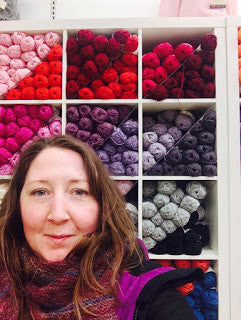

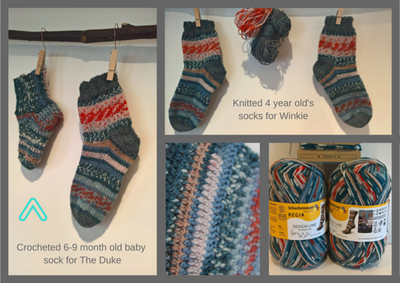
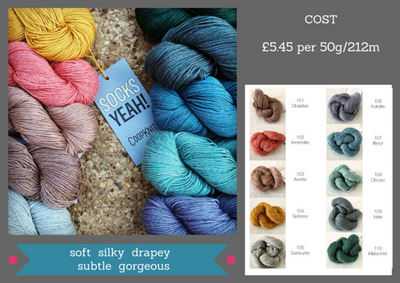
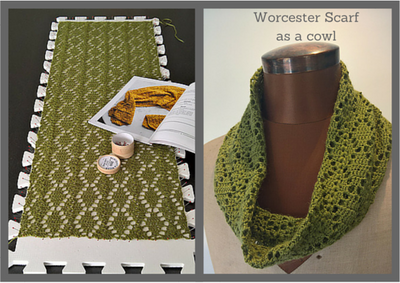
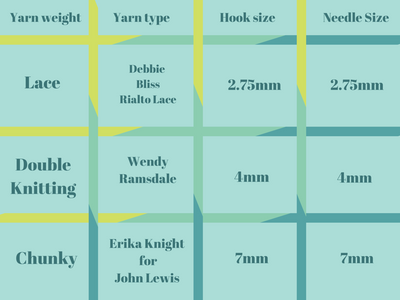
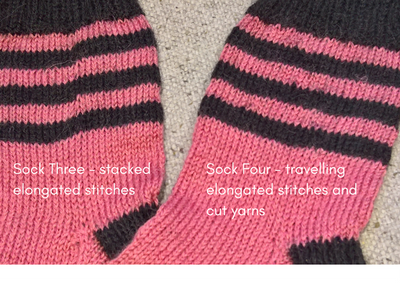
lasix overnight shipping
новый автобус кавз
Tegs: новый кавз https://www.tc-bus.ru/kavz
продажа universe luxury
заказать автобуса hyundai luxury
заказать хёндай юниверс люксори
вектор next цена
Tegs: продажа вектор некст https://www.tc-bus.ru/autobusi/prigorodnye/paz320455_04_vektor_next_turisticheskij
продажа автобуса hyundai luxury
продажа автобуса hyundai universe
купить автобуса hyundai luxury
is generic viagra as good
Oroboros
Tegs: Oscar Tropitzsch https://chimmed.ru/manufactors/catalog?name=Oscar+Tropitzsch
mabtech ab
mabtech com
mabtech.com